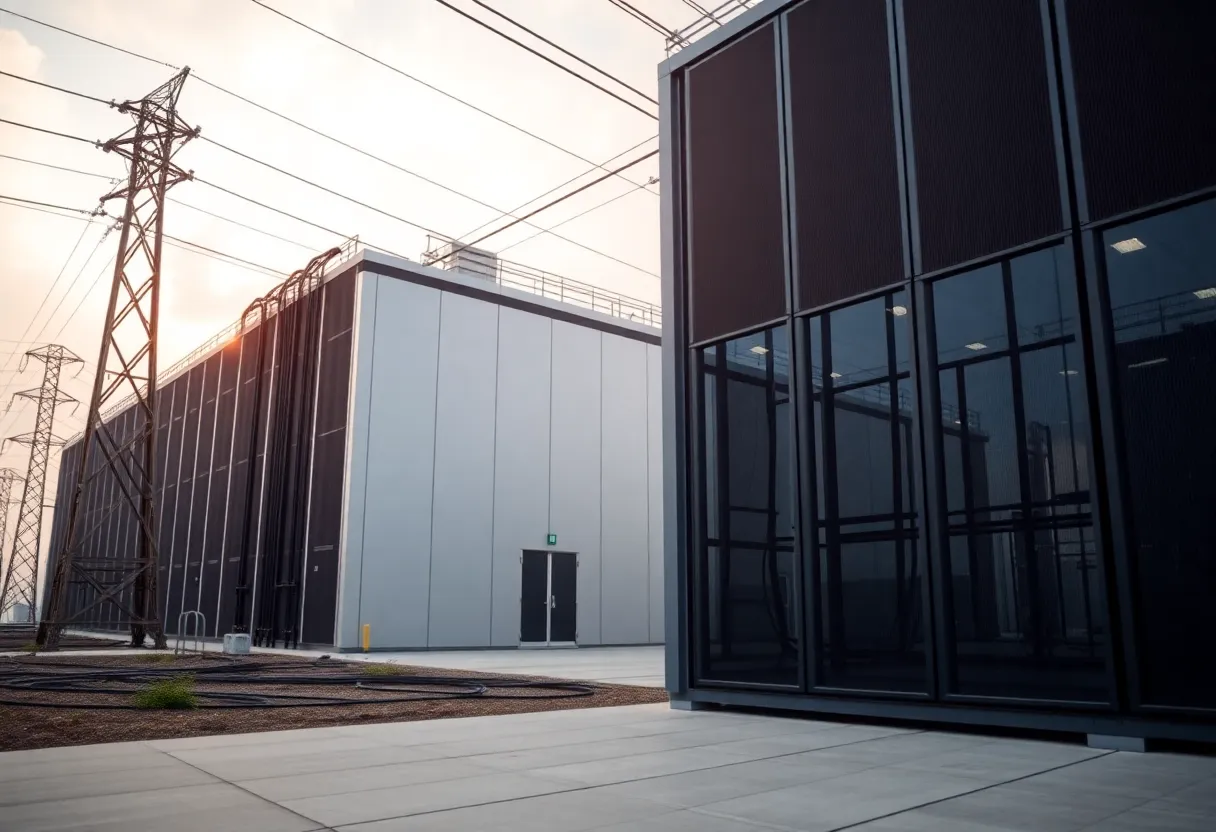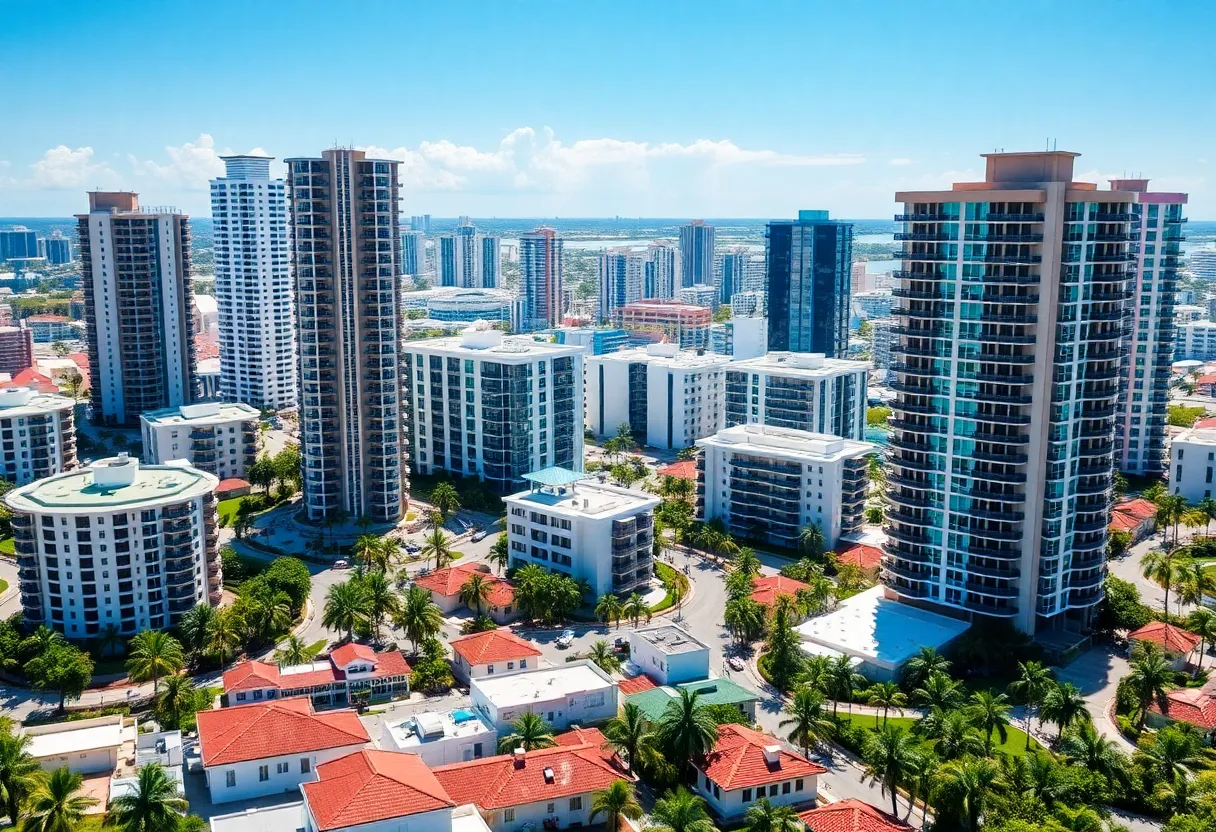News Summary
Virginia is encountering a significant rise in electricity demand spurred by the rapid growth of data centers. This surge raises concerns for residents about utility costs and grid reliability, especially in light of Dominion Energy’s projections of a 5% annual increase in power demand. North Carolina and Ohio are also experiencing similar trends, prompting discussions about balancing economic growth with environmental sustainability and energy infrastructure upgrades to support the expanding data center operations.
Virginia is experiencing an unprecedented surge in electricity demand fueled by the rapid expansion of data centers. The rise in energy needs has raised concerns among local residents and businesses in Virginia, North Carolina, and Ohio, who fear the impact on their utility bills and grid reliability. This trend poses significant challenges to existing electrical infrastructure while also raising questions about the balance between economic growth and environmental sustainability.
In Virginia, Dominion Energy has predicted a 5% annual increase in peak power demand over the next 15 years. This projection directly conflicts with the goals outlined in the Virginia Clean Economy Act (VCEA), which mandates the transition to carbon-free energy sources by 2045. To address the growing demand, Dominion Energy has proposed the construction of a new 944 MW natural gas “peaker” plant. However, this plan has faced considerable opposition from clean energy advocates who argue for the importance of pursuing cleaner energy alternatives to meet the state’s energy needs.
There are growing concerns among Virginia residents about their electric bills, particularly as the November 2025 elections approach. Many residents are vocal about their apprehensions regarding steep utility costs linked to the rising presence of data centers in the region.
North Carolina is also witnessing a significant increase in electricity demand, with projections indicating a need for an additional 6 GW of power capacity. Duke Energy has attributed much of this surge to the expansion of data centers, prompting stakeholders in the state to grapple with how to meet these energy demands while remaining committed to clean energy objectives.
In Ohio, the Public Utilities Commission has implemented a new tariff structure specifically aimed at large data centers. This pricing model requires data center operators to pay a base rate of 85% of their projected energy usage. The intention behind this structure is to ensure that data centers bear the costs of any necessary upgrades to the electrical infrastructure, rather than passing the burden onto residential customers, who may already be feeling the pinch from rising utility bills.
The proliferation of data centers has significantly influenced electricity rates across the three states. The PJM Interconnection has identified the expansion of data centers as the primary driver behind a 22% increase in wholesale electricity prices projected for 2025. This growth aligns with broader economic forecasts, which anticipate a 2.5% annual increase in electricity demand throughout the United States until 2035, predominantly fueled by data center operations.
Amid these developments, consumer advocates are voicing their concerns over the implications of rising electricity costs. They warn that this increase represents a transfer of wealth from residential customers to large corporations that benefit from the infrastructure developments associated with data center expansions. Major tech companies like Amazon and Microsoft are actively planning and constructing data centers in regions grappling with high energy demands, further complicating the situation.
As discussions continue around managing electricity demand, innovative solutions like microgrid technology are being considered. Legislative measures are being introduced to support the development of microgrids, which could help alleviate some of the pressures placed on the larger electrical grid due to the increased energy consumption driven by data centers.
The intersection of growing electricity demand and the pursuit of cleaner energy sources poses an ongoing challenge for Virginia, North Carolina, and Ohio. Local governments, utility companies, and community members will need to navigate these complexities in order to ensure grid reliability and sustainable energy practices while accommodating the expansions of these critical data centers.
Deeper Dive: News & Info About This Topic
HERE Resources
Small Business Owners in NYC Demand Action on Regulations
New York State Unveils Quantum Research Hub at Stony Brook
New York State Invests $300 Million in Quantum Innovation Hub
New York State Invests $300 Million in Quantum Research Hub
New York Invests in Quantum Research Hub at Stony Brook University
Small Construction Firms Struggle Amid Labor Shortages
How to Analyze Variables That Affect Your Home’s Value Before Buying
Gigabit Fiber Secures Investment to Enhance Digital Infrastructure
A Journey of Reinvention from NYC to Mexico
Coastline Wealth Management’s Remarkable Growth Under Garrett’s Leadership
Additional Resources
- JD Supra: The Rise of Data Centers and Their Impact
- JD Supra: The Site Report on Construction Law
- Business Insider: Electric Bills Rise in 13 States Due to Data Centers
- Quartz: Americans’ Electricity Bills Rise Due to Data Centers
- New York Times: AI Data Centers and Electricity Costs
- Wikipedia: Data Center
- Google Search: Data Centers Electricity Impacts
- Google Scholar: Data Centers Energy Demand
- Encyclopedia Britannica: Data Center
- Google News: Data Centers Electricity Costs
Author: STAFF HERE NEW YORK WRITER
The NEW YORK STAFF WRITER represents the experienced team at HERENewYork.com, your go-to source for actionable local news and information in New York, the five boroughs, and beyond. Specializing in "news you can use," we cover essential topics like product reviews for personal and business needs, local business directories, politics, real estate trends, neighborhood insights, and state news affecting the area—with deep expertise drawn from years of dedicated reporting and strong community input, including local press releases and business updates. We deliver top reporting on high-value events such as New York Fashion Week, Macy's Thanksgiving Day Parade, and Tribeca Film Festival. Our coverage extends to key organizations like the Greater New York Chamber of Commerce and United Way of New York, plus leading businesses in finance and media that power the local economy such as JPMorgan Chase, Goldman Sachs, and Bloomberg. As part of the broader HERE network, including HEREBuffalo.com, we provide comprehensive, credible insights into New York's dynamic landscape.





